Farm management refers to the decisions made by producers- in cooperation with investors and agricultural businesses to be profitable in a sustainable manner. The factors that decisions need to be made about to ensure sustainability, includes resource application, production, marketing and finance. These are considered within the context of the larger external agricultural environment.
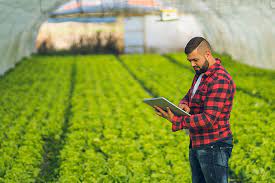
Success in farming is a journey full of challenges and opportunities. To be successful in farming, the modern farmer needs to adapt swiftly and with accuracy to an ever-changing larger Agri-economic environment. In this learning unit, we will explore the Agri-economic environment and role-players contributing to activity in this environment.
‘Begin with the end in mind’. When a farmer starts with a farming business, it is of utmost importance to plan all actions in such a way as to make optimal use of all resources within the boundaries of sustainability. Every action a farmer takes should contribute towards this end goal, including the management of inputs (natural resources; equipment; human resource; financial; legislative); the processing (planning a farm site; natural resource management plan; optimising farm systems; whole farm management) and the outputs (producing sustainable products for the markets) – this form the framework of this programme in Infrastructure and resource planning:
Click here to view a video that explains farm finance analysis.
|
INPUT |
PROCESSES |
OUTPUT |
|
OPERATIONAL RESOURCES |
||
|
Buildings (housing, food storage, barn) Machinery (Tractor, ploughs etc) Fencing (incl. tools) Irrigation (water supply, pipes) Electricity |
Whole farming system
Natural resource management plan
Optimise farming systems
Plan a site |
Products to markets in a profitable yet sustainable way |
|
NATURAL RESOURCES |
||
|
Soil Plant/vegetation Animals Water |
||
A Holistic Approach
‘The whole is more than the individual parts of the whole put together’. To understand this fundamental philosophy behind a holistic approach, we will first ponder on the systems theory.
Systems Theory
Systems theory was proposed in the 1936 by the biologist Ludwig von Bertalanffy, and further developed by Ross Ashby von Bertalanffy was both reacting against reductionism and attempting to revive the unity of science. He emphasized that real systems are open to, and interact with, their environments, and that they can acquire qualitatively new properties through emergence, resulting in continual evolution.
Rather than reducing an entity like the human body to the properties of its parts or elements like organs or cells, systems theory focuses on the arrangement of and relations between the parts which connect them into a whole, in other words holism. This organization determines a system, which is independent of the concrete substance of the elements (e.g. particles, cells, transistors, people, etc.).
Elements of systems theory are: Input, throughput, feedback, control, environment, goals
The systems view was based on several fundamental ideas.
All phenomena can be viewed as a web of relationships among elements, or a system.
All systems, whether electrical, biological, or social, have common patterns, behaviours, and properties that can be understood and used to develop greater insight into the behaviour of complex phenomena and to move closer toward a unity of the sciences. System philosophy, methodology and application are complementary to this science.
Focussing of farming, we need to learn about the environment as a system, including several farming systems; the farm can also be viewed as a system as you will discover further in this module.
Click here to view a video that explains a general systems theory.
The Environment As A System
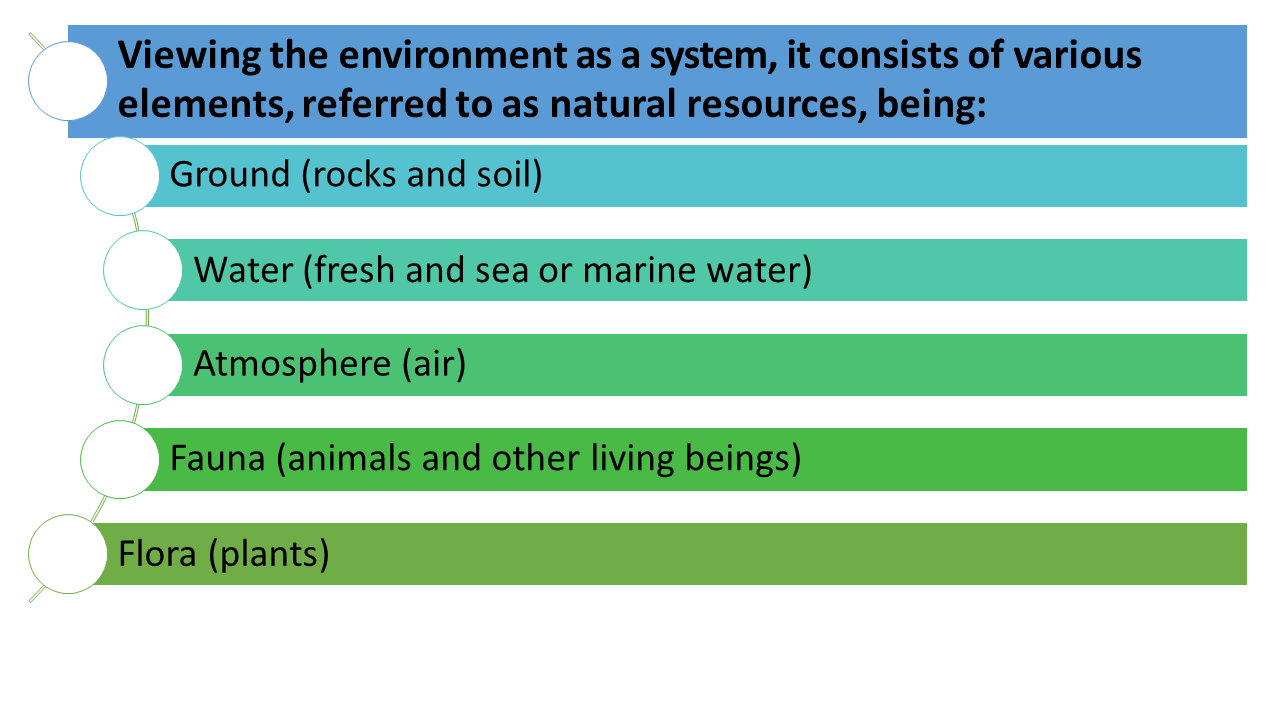
Each element works within a structured system and in coordination with the other elements to ensure its own survival. Harmony and balance in the natural environment is essential to life.
Through understanding how delicate our world is and the importance of harmony and balance, we can learn to maintain all resources on earth and live in a healthy and better world. Sustainable farming practices are achieved by ensuring that all elements in the system co-exist in harmony and balance by implementation of good farming practices.
Ecosystem Processes
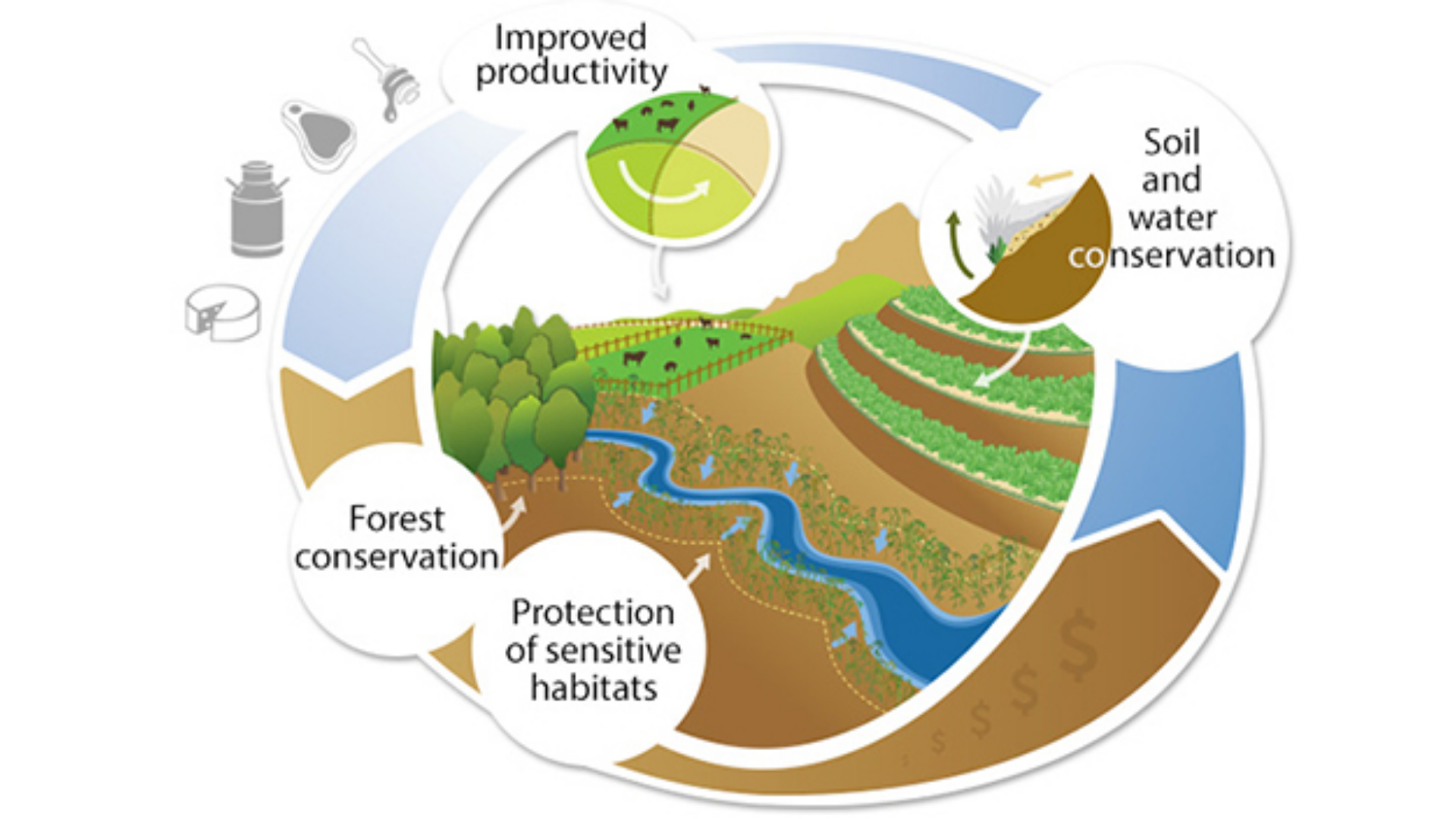
Managing your farm holistically means to work with nature and not against it. To achieve this, cognisance needs to be taken of the ecosystems existing on the farm, namely:
Community dynamics/systems: The way in which living communities move towards a complex and healthy environment. Living organisms do not develop in a vacuum. Plants require animals and vice versa and both require insects, bacteria and viruses for survival. Any healthy ecosystem can be taken as an example.
Energy cycle or the food chain: the energy from the sun is key to all life on earth and its transfer from one living organism to the next is called the energy cycle. Plant as primary consumers of solar energy. Through photosynthesis, they convert incoming solar radiation into organic (carbon based) molecules, feeding themselves and providing food for secondary consumers. Micro-organisms, insects, fish, reptiles, birds, mammals that eat vegetable matter make up these secondary consumers. The cycle continues with each level of consumers feeding from the layer below, forming a pyramid of feeding, some consumers feeding on more than one layer. Plants capture just a fraction of the sun’s energy and with each move up the pyramid, less energy is available. This reduction in energy means less total biomass can survive at these higher levels. In other words, predators cannot outnumber prey. At the same time, the lower levels are very unstable if there are insufficient predators in the upper levels, as evidenced by outbreaks of disease or starvation in secondary consumer populations when their numbers get too high.
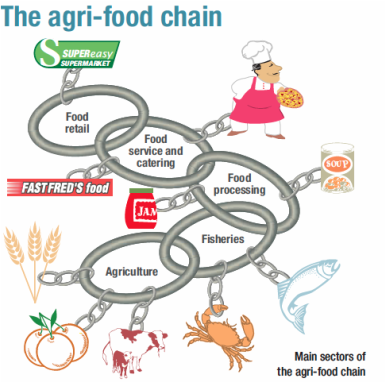
The water cycle is the movement of water between the atmosphere and the earth. Some water runs off the land to enter streams, rivers, lakes and oceans. In a healthy ecosystem, the soil matrix is capable of absorbing large quantities of moisture. Of the water that is absorbed of the soil, some evaporates back out of the soil, some enters the groundwater, and some is used by the living organisms in the soil, including plants through their roots. In an effective water cycle, water is readily available and used by plants. In an ineffective water cycle, most of the water runs off or evaporates from the soil. The ability to absorb water and bank it for future plant use requires a healthy, living soil that contains plenty of humus or organic matter in the soil. Organic matter is made up of decaying and living organisms. Scientists estimate that tens of millions of living organisms live in a single tablespoon of healthy soil.
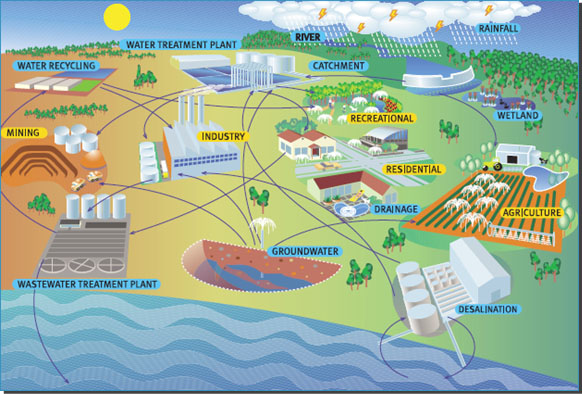
The mineral cycle is the breaking down of minerals into a form that can be used by plants and animals. Through this breakdown, essential trace nutrients and minerals are made available to plants and animals. The mineral cycle includes sub cycles, among them the carbon cycle, the nitrogen cycle and the phosphorus cycle.
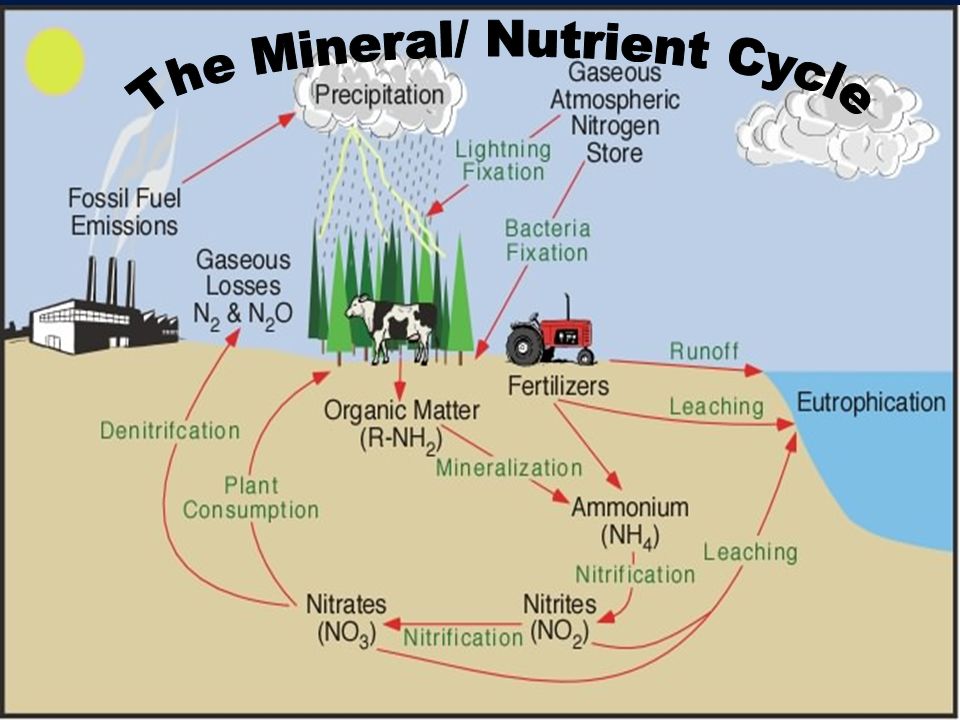
Carbon is the building block of all life. The implementation of the carbon cycle is not gentle or kind: Death is the absolute partner of life. Without death and decay, no new life is possible.
When all these cycles are optimised plants and animals thrive. Cycles that no longer operate properly result in increased water runoff, crusting of soil, erosion from both wind and water, and a variety of other symptoms. The extreme example of cycles that have gotten out of balance is seen in desertification, but even in humid environments, which tend to be more forgiving, you will often see the same symptoms.
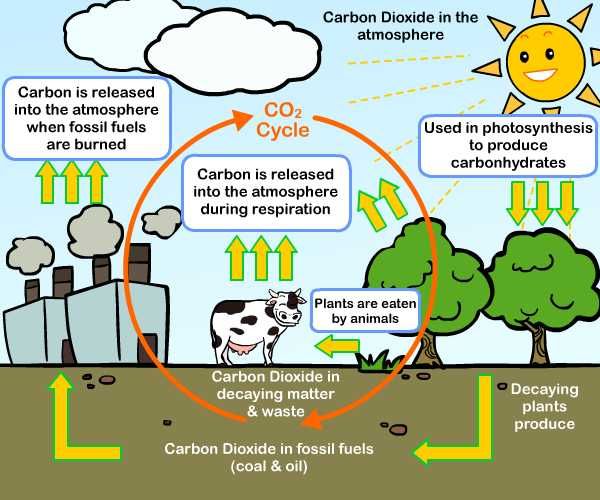
Farming As A System
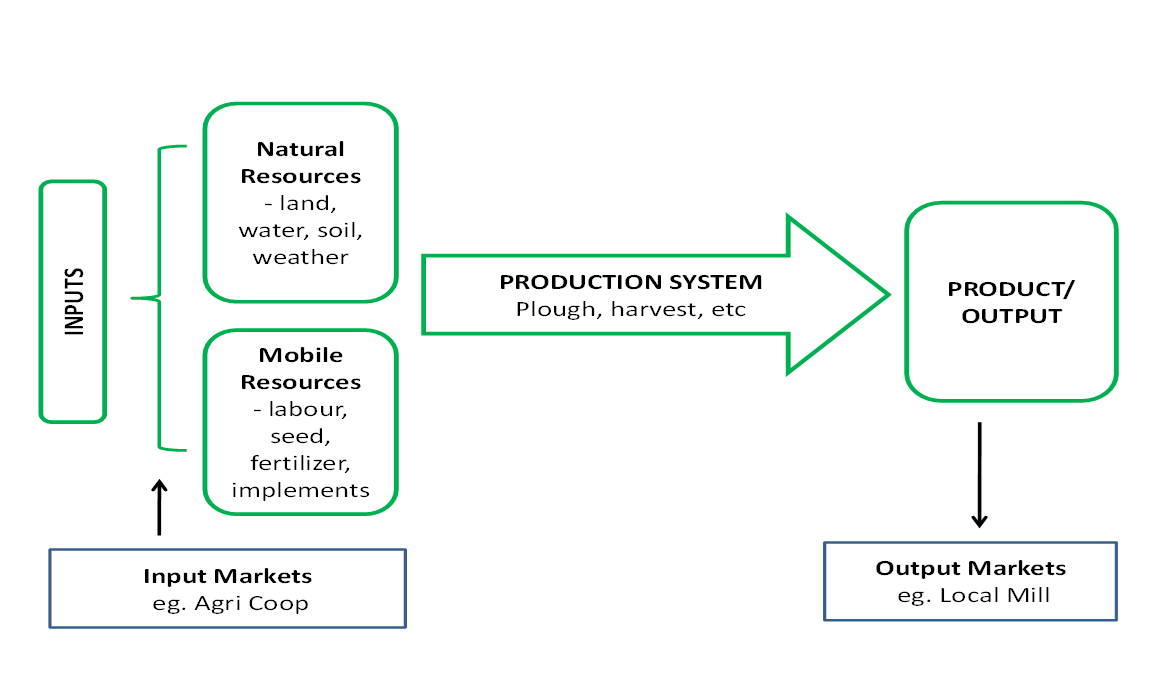
Farming is an example of a primary industry. Like a factory, a farm is a system of inputs, production and outputs.
Input
The inputs can be divided into fixed/ natural resources and mobile/ non-fixed resources. Mobile inputs include labour, capital (money), machinery, seeds, fertilizer and other things you would apply to make your crop grow. Natural resource inputs include climate and weather, soil, relief (shape of the land) and slope.
Fixed Input – The Land
Natural resources are, by definition, limited. More land or more water cannot be produced, and available natural resources must therefore be treated with respect if the farming operation is to be successful. The availability of these resources to meet the long-term needs of the farm is of critical importance.
The potential of a certain site for production depends on its climatic suitability for the varieties to be grown or livestock to be reared and the status of the fixed or natural resources, specifically the availability of sufficient high-quality water and suitable soil. Land and water are scarce, expensive, and must be used efficiently.
Issues to consider when deciding whether land is suitable to produce a specific livestock/crop include:
- Is the land of sufficient size to support the required livestock/ plantings?
- Is the land located in the right climatic area to support the desired livestock/varieties?
- Is the land free from pests and diseases?
- Does the land have sufficient areas of the required soil type and quality?
- Does the land have a sufficient supply of high-quality water (as required by the crop/livestock)?
- Is labour available to work the land?
- Is the land situated at an appropriate and manageable distance from the Output market, such as the mill/abattoir?
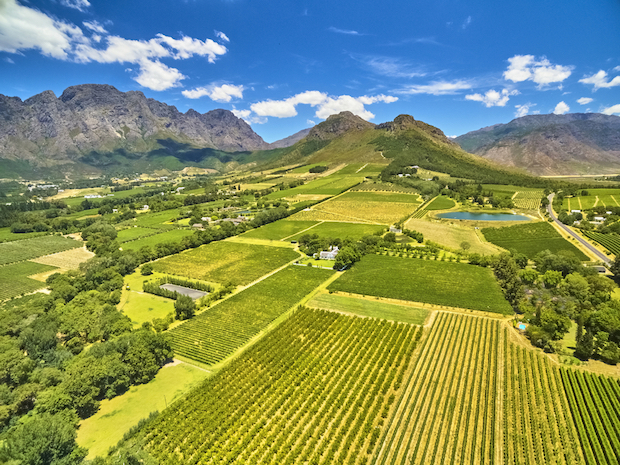
Mobile Inputs: Chemicals; Labour; Machinery
The needs of a farm are to have the maximum yield and make a profit that can be used to grow the farm.
The goods that a farm might require include:
- Agro-chemicals
- Implements
- Packaging material
- Parts
These goods are obtained from the Input Market, such as the Agri Coop, the Local Store, etc.
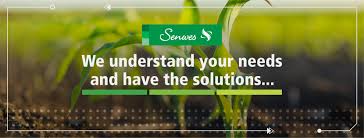
The services that a farm might need include:
- Telecommunication
- Financial institution’s assistance
- Irrigation specialists/ Pesticide specialists
- Transport Services for goods
- Labour
Production
The production system is the activities that take place on the farm and that can be linked with one another. These may include harvesting, ploughing, rearing animals and milking.
Farms with arable lands are used to grow crops. The farms containing primarily pastures specialise in the rearing of animals. Mixed farms refer to those where more than one product is produced.
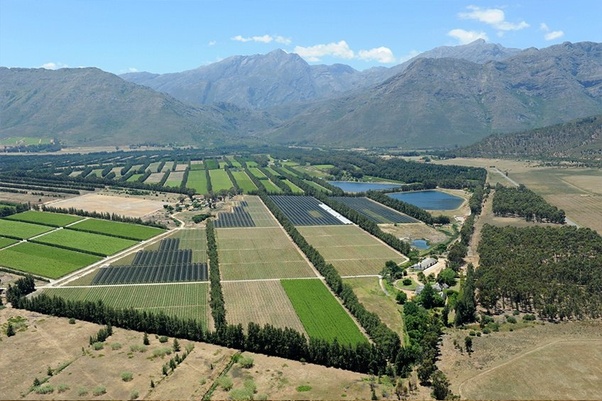
Production: Farming Practices
The farmer wants to achieve the following through his production practices (the way he farms):
- Achieve yield targets.
- Ensure the products meet market quality specifications.
- Farm in such a way that the process is sustainable; and
- Within the framework of Good Agricultural Practices
Environmentally speaking, therefore, production must be managed in such a way that the processes can be used repeatedly throughout the lifespan of the production area (field, orchard) and beyond.
This is achieved by minimizing the use of harmful production practices and applying those that have minimum negative impact on the environment.
Examples of such production practices include:
- Selecting varieties best suited to the environment and climate.
- Using certified nursery material/ seeds.
- Using pesticides with minimum impact on non-target insects.
- Minimizing the use of soil tillage equipment; and
- Accurate and targeted use of fertilizers
Production practices should therefore be carefully managed to achieve the desired production objectives with minimal harmful effects to the environment.
Outputs
Farming systems can also be classified according to their outputs/ product. The output is the product that is delivered through the production process. The product can be sold to the Output Market or consumed by the farmer and his family.
The goods that a farm might offer include:
- The product that has been produced.
- A processed version of the product that has been produced
- A service to the community, e.g. ploughing for other farmers
The Output Markets
The Buyer
Knowing the output market is essential. The requirements of consumers, wholesalers and retailers (market demand) determine many of the decisions that are taken in respect of production practices. Getting the highest possible return for the product that is produced will ultimately determine the commercial success of the farming operation.
The marketplace to which the farm supplies can be:
- Direct to the consumer via farm stalls or direct sales
- To the silo/ maize buyer for packing, grading and sorting
- The local mill
The Consumer
The needs that the consumer has are for high value products at reasonable prices, of consistent quality and that is not damaging to their health.
The needs that a farm might fulfil:
- The consumer’s hunger
- The consumer’s request for a specific type of product
- The consumer’s request for a specific processed product- e.g. maize as chicken feed